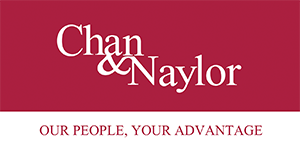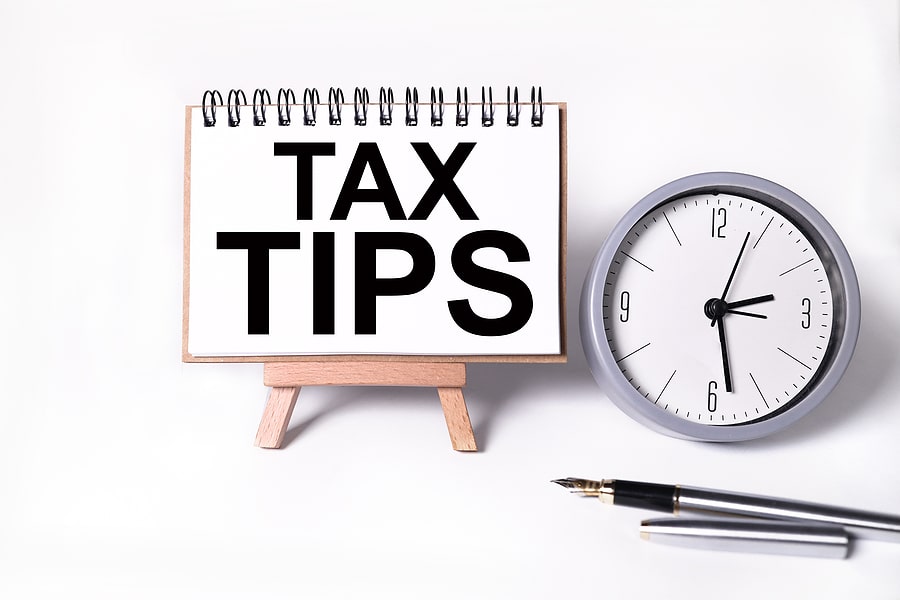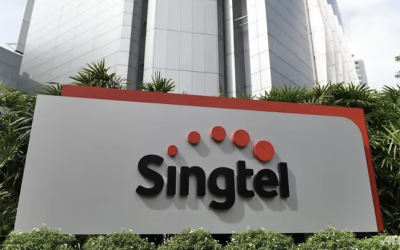Staying on top of your taxes and constant changing rules can be time consuming for employees and contractors. The impact of Covid-19 on business and taxpayers along with data matching technology employed by the ATO, taxpayers need to be more aware of checking work related expense claims. The ATO is also on the hunt for undeclared income. As we head into the new financial year we have put together a list of important information for employees and contractors.
In this article, we will cover the following areas you should be aware of when lodging your tax return.
- Lodge on time
- Definition of a business
- Income reporting
- Claiming expenses
- Working from home
- Car and Travel Expenses
- Depreciation & Expenses for Contractors, Donations
- Superannuation Contributions
- Tax Offsets
If you are lodging your return, you need to ensure that you fully understand these key areas.
- Lodge on time
If you’re lodging your own tax return, you need to lodge it by 31 October 2022. If you use a registered tax agent, and are on their client list before 31 October 2022, you will generally be given an extended due date.
A lot of information will be pre-filled by the ATO in your tax return. So it’s best to wait until all the data is finalised before lodging. This is usually completed by the end of July but can take until mid-August.
Check that your end-of-year income statement from your employer says “tax ready” and your private health insurance, dividend and interest information is available before completing your return. If your end of year income statement has unfinalised data, you may need to amend your tax return and pay additional tax if you lodge your return without the final information.
- Are you in business?
It’s important to understand the differences between a hobby and a business for tax purposes. There’s no simple definition and sometimes what starts out as a hobby grows into something more. Factors to consider include whether you intend to make a profit, repeat similar types of activities or carry out activities in a businesslike manner. The ATO provides information on online selling, share trading, and home-based business and you can test out the business.gov.au tool.
You can’t claim a loss for a business that is little more than a hobby or lifestyle choice. However, you can defer the loss until you make a profit from the business.
- Income Reporting
Income statements
You can access your income statement from your employer through ATO online services in myGov. It will show as “tax ready” by 31 July. Your tax agent can also access your income statement for you.
Government payments
The ATO prefills tax returns with a number of Australian Government payments including JobSeeker and Newstart by the end of July 2022. Check that all required allowances and payments have been included in your tax return but don’t include amounts that are not taxable such as tax-free government pensions and benefits.
For individuals, pandemic leave disaster payments are treated the same as your usual salary or wages. If you received a pandemic leave disaster payment, Services Australia will advise you of the amount received. You should also check the tax treatment of disaster assistance payments.
Contractors (i.e. sole traders) who received COVID-19 or disaster-related support may need to report and pay tax on those amounts. The ATO has published information on the tax treatment of a range of federal, state, territory and local government assistance packages.
Termination and redundancy payments
You need to include income protection, sickness or accident insurance payments, redundancy payments and accrued leave payments in your tax return. If you take leave, are temporarily stood down or lose your job and receive a payment from your employer, there are different tax rules that apply for the different payments.
Online, sharing and gig economy
If you drive people around, do odd jobs, rent out your possessions, run social media accounts or sell products, your income from these activities may be assessable and your expenses deductible. This can include income from barter, cryptocurrency and the sharing economy as well.
The ATO receives data from a range of sharing economy platforms which is matched against tax returns. Make sure you keep records and report this income correctly.
For some activities such as online selling or personal services, you first need to determine whether you are in business.
Cash payments
It’s ok to receive income in cash but you must declare these amounts in your tax return. If you’re an employee who’s paid cash, your employer must still pay you the correct award wages, withhold tax from your pay and pay your super as required by law. They must also provide you with an income statement at tax time which should match up with the income they paid you.
For contractors, the consequences of not declaring cash income may include a tax bill with interest as well as criminal and administrative penalties. The ATO is cracking down on the shadow economy so it’s best to do your taxes properly.
Personal services income and sole traders
If more than 50 per cent of the amount you received for a contract was for your labour, skills or expertise, then the personal services income (PSI) rules may apply.
As a sole trader earning PSI, you won’t be able to claim certain deductions against your PSI. For example, rent, mortgage interest and payments to your spouse or associate would generally not be deductible.
- Claim your expenses
You can use the ATO’s myDeductions app to keep track of your expenses during the year then upload the information into your tax return through myGov.
Work-related deductions
Claiming all your work-related deductions may considerably reduce your tax bill.
Typical work-related expenses include:
- uniforms and protective items
- working from home
- employment-related mobile phone and internet costs
- subscriptions and union fees
- travel expenses between worksites or client locations (but not the commute to and from home).
- If an expense was for both work and private purposes, you can only claim a deduction for the work-related portion.
- You generally can’t claim the cost of travelling to and from work.
Make sure you keep receipts, diaries and documents to back up your claims and show how you calculated your private use percentage. The ATO publishes fact sheets for a range of occupations.
Be aware that the ATO checks work-related deductions closely and uses real-time analytics to detect claims that appear out of the ordinary.
Remember, for an expense to qualify:
- you must have spent the money yourself and weren’t reimbursed
- it must directly relate to earning your income, and
- you must have a record to prove it.
- Working from home expenses
You may be able to claim a deduction for working from home expenses like electricity, office equipment, phone and internet expenses. Coffee, snacks and toilet paper aren’t deductible and, for most employees, neither are rent, mortgage interest, water or rates.
There are three ways you can claim home office expenses. Please refer to the table below.
| Working from Home Expenses | ||
| Claim Method | Claim Details | Notes |
| Shortcut | 80 cents hour worked at home. | But be careful – if you use this method, no other expenses for working from home can be claimed. You must keep a record of the number of hours you worked from home. This could be a timesheet, roster, diary, or similar document that sets out the hours you worked. |
| Fixed Rate | 52 cents for each hour for home office expenses including the decline in the value of furniture, furnishings, electricity, gas and cost of repairs. | You must have a dedicated work area such as a home office. You need to keep a record of hours worked as well as a diary for four-weeks to show your usual work-from-home pattern. |
| Actual Cost | The actual cost method is exactly that – your actual costs. If you don’t have a dedicated work area, such as a home office, you will generally only incur minimal additional running expenses. | All actual cost claims need to be supported by records of hours worked, receipts and how you worked out the amounts claimed particularly if you work in a shared space. |
COVID-19 test expenses
From 1 July 2021, if you’re an employee, sole-trader or contractor and you pay for a COVID-19 test for a work-related purpose, you can claim a deduction if you:
- use the test for a work-related purpose, such as to determine if you can attend or remain at work
- bought a qualifying COVID-19 test
- pay for the test yourself
- keep a record to prove that you incurred the cost (usually a receipt), and
- were required to take the test for work purposes
You can only claim the work-related portion of your expense on COVID-19 tests. For example, if you buy a multipack of COVID-19 tests and use some for private purposes (such as by other family members or for leisure activities), you must only claim for the portion of the expense you use for a work-related purpose
Self-education expenses
You can claim self-education expenses provided your studies are directly related to either maintaining or improving current occupational skills or are likely to increase income from your current employment. If your study is unrelated to your work, the expenses incurred are not deductible.
Typical self-education expenses include course fees, textbooks, stationery, student union fees and the depreciation of assets such as computers, tablets and printers.
You must also disallow the first $250 of self-education expenses incurred from a place of education, such as from university or college. This $250 can be offset by non-deductible amounts such as childcare while attending self-education activities or capital expenses related to self-education.
Higher Education Loan Program (HELP) repayments are not deductible.
- Car expenses
If you use your motor vehicle for work travel, you have two choices to claim expenses:
- The cents per kilometre method provides 72 cents per kilometre for travel up to 5,000 kilometres. This amount includes all your vehicle running expenses, including depreciation.
- If your work travel exceeds 5,000 kilometres, you must use the logbook method to claim a tax deduction for the work-related portion of your car expenses. You’ll need to keep odometer readings, receipts and invoices to support your claim.
In most situations, you can’t claim any expenses under these methods relating to a car owned or leased by someone else, including your employer or another member of your family.
Travel expenses
You can claim certain travel expenses incurred when travelling overnight for work. These may include meals, accommodation, transport fares, bridge and road tolls, car parking, car hire fees and other incidental costs.
- You will need to reduce your claim if your trip and travel expenses are partly private. You may also need to adjust the amount claimed if you receive a travel allowance.
- Trips between home and work are generally considered private travel and aren’t deductible. There are some situations that you can claim such as travelling from your home to an alternative workplace, when you need to carry bulky tools or equipment or when you do itinerant work.
- If you ‘travelled on work’ during COVID-19 and had to quarantine, you can claim a deduction for accommodation, food, drink and incidental expenses. No deduction is available for private quarantine expenses or when you travel to or from a work location and need to quarantine.
The record-keeping rules depend on whether you receive a travel allowance, travel for six nights or more and whether you are claiming less than the reasonable amount. Keep track of your travel allowances, maintain a travel diary and store your receipts to make it easier to support your claim.
- Depreciation
Immediate deductions can be claimed for assets that cost under $300 to the extent the asset is used to generate non-business income. These include tools, calculators, briefcases or computer equipment.
- Assets over $300 that are used for an income producing purpose can be written off (depreciated) over a period of time as a tax deduction.
- The amount of the deduction is generally determined by the asset’s value, its effective life and the extent to which you use it for work purposes.
Note: Be aware that if you use the ATO’s 80 cents per hour shortcut method for working from home claims, you cannot claim depreciation for your home office assets such as furniture.
Expenses for contactors
You can claim a deduction for most costs you incur in running your business, such as travel, car, marketing, home-based business expenses and business finance costs. For asset purchases, consider the simplified depreciation rules. Make sure you account for private use correctly and keep good records.
Donations
The ATO will pre-fill your tax return with information they have received about gifts and donations. Make sure you add in any donations that weren’t included where the receipt shows your donation is tax deductible. Also include donations make through workplace-giving. You can also claim a tax deduction of up to $10 for certain donations without a receipt.
- Superannuation contributions
Consider maximising your concessional or non-concessional contributions before the end of the financial year with a concessional contribution cap of $27,500 for the 2022 income year.
- Carry-forward rules also allow you to make extra concessional contributions without having to pay extra tax.
- Check your superannuation contribution and don’t leave it until 30 June to make your contributions as your super fund will not receive the contribution in time.
You may also be able to claim a tax deduction for personal super contributions that you make from your after-tax income.
- Tax offsets
Tax offsets directly reduce your tax bill. Eligibility for tax offsets generally depends on your income, family circumstances and specific conditions. Some offsets are automatically applied while you’ll have to provide additional information on your return for others. Most offsets are non-refundable meaning they can reduce your tax bill to zero but any excess isn’t refunded to you.
Examples include the low and middle-income tax offset (LMITO) which gives eligible individuals up to $1500 in tax offsets and the small business income tax offset of up to $1,000. Talk to us to find out if you qualify for tax offsets.
Remember to start gathering your information now, so that you can be ready to claim your maximum tax refund.
General Advice Warning
The material on this page and on this website has been prepared for general information purposes only and not as specific advice to any particular person. Any advice contained on this page and on this website is General Advice and does not take into account any person’s particular investment objectives, financial situation and particular needs.
Before making an investment decision based on this advice you should consider, with or without the assistance of a securities adviser, whether it is appropriate to your particular investment needs, objectives and financial circumstances. In addition, the examples provided on this page and on this website are for illustrative purposes only.
Although every effort has been made to verify the accuracy of the information contained on this page and on this website, Chan & Naylor, its officers, representatives, employees, and agents disclaim all liability [except for any liability which by law cannot be excluded), for any error, inaccuracy in, or omission from the information contained in this website or any loss or damage suffered by any person directly or indirectly through relying on this information.





